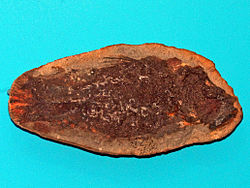| Whiteiidae Temporal range: Triassic | |
|---|---|
 | |
| Whiteia woodwardi | |
| Scientific classification | |
| Kingdom: | Animalia |
| Phylum: | Chordata |
| Class: | Actinistia |
| Order: | Coelacanthiformes |
| Family: | † Whiteiidae Schultze, 1993 |
| Genera | |
Whiteiidae is an extinct family of prehistoric coelacanth fishes which lived during the Triassic period. [1] Torino, Soto, and Perea (2021) did not support this clade as it was not found to be monophyletic in their analysis, [2] however, Ferrante and Cavin (2025) found the family to be a valid clade. [3]




